Main Content
Article
Cemetery Symbolism
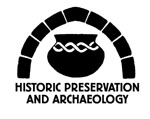 Cemetery markers often have intricate patterns and symbols carved upon them. These symbols usually possess special meanings to those buried there or transmit messages to those visiting--acting as subtle reminders of the deceased or perhaps offering advice to those remaining behind. Below you will find the meanings of some of the symbols commonly found on tombstones around Indiana.
Cemetery markers often have intricate patterns and symbols carved upon them. These symbols usually possess special meanings to those buried there or transmit messages to those visiting--acting as subtle reminders of the deceased or perhaps offering advice to those remaining behind. Below you will find the meanings of some of the symbols commonly found on tombstones around Indiana.
Symbols:

Scythe or sickle
The scythe represents the grim reaper, the master of death and harvester of souls. Symbolic of cutting down a plant in its prime for harvest, the scythe is often used as a Memento mori symbol to remind others to expect death and prepare for it.

Shepherd's Crook
A shepherd's crook represents charity--giving of one's own time and energy to guide or protect others--and sometimes spiritual leadership.
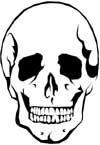
Skull
A skull is representative of death and mortality. A symbol of the transitory nature life and death, the skull is frequently a prime feature of a Memento mori. Sometimes skulls are seen with wings (called death's heads or winged death--representing the fleeting nature of life and impending death) or with crossed bones beneath it (representing death and the crucifixion).
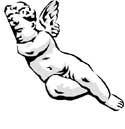
Sleeping Cherub
The sleeping cherub or angel represents innocence, usually the innocence and purity of children. These figures typically adorn the graves of young children.

Snake
The snake is an ancient symbol for everlasting life, often creating the shape of a circle with its tail in its mouth (called oroboros). Snakes were popularly thought to cheat death and gain vigor by shedding their skins.

Star
The star, in ancient custom, represents heavenly guidance and divine leadership. Stars in legend, myth, and even scripture have acted as guides, omens, and portents for men and served to mark special events and people. Stars are also a prominent theme in American patriotic or military grave markers.

Sun
The sun can represent many things depending on its specific depiction. A rising sun symbolizes new life or the resurrection in the afterlife, while a setting sun represents death. The sun when shown shining brightly serves as a metaphor for an everlasting life.

Torch
A torch, like a candle, represents life. A torch seen ablaze represents immortality, the everlasting life, and wisdom (like the lamp--a symbol of knowledge). Conversely, an inverted torch symbolizes death--a life extinguished.

Tree
The tree on a tombstone or grave can also represent many things. One aspect of the tree is regeneration, regrowth and renewal. Another aspect of the tree represents knowledge, life, and time, this stems from the Norse tree of life, Yggdrasil, which connects all of the mythological realms together. The tree can also represent man's folly or sin--through its place in story of the Garden of Eden. A tree stump represents a life cut short, while a sprouting tree represents a new beginning in the afterlife.
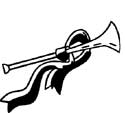
Trumpet
The trumpet symbolizes the arrival of the soul and its entrance into Heaven. A metaphor for the joyous resurrection of the individual in the afterlife.
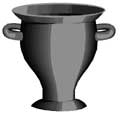
Urn
The urn is an ancient symbol for death, stemming from the cremation rituals practiced in the past. The urn represents the return of the body back to ashes and dust and the soul's rebirth in the next realm. Often, the urn is draped with cloth. This cloth is representative of death--the final partition separating the living world from that of the dead.

Wheat or Wheat Sheaves
Wheat, or a sheaf of wheat, represents the divine harvest, the taking of humanity by God. It can also represent the long and fruitful life enjoyed by the deceased.
